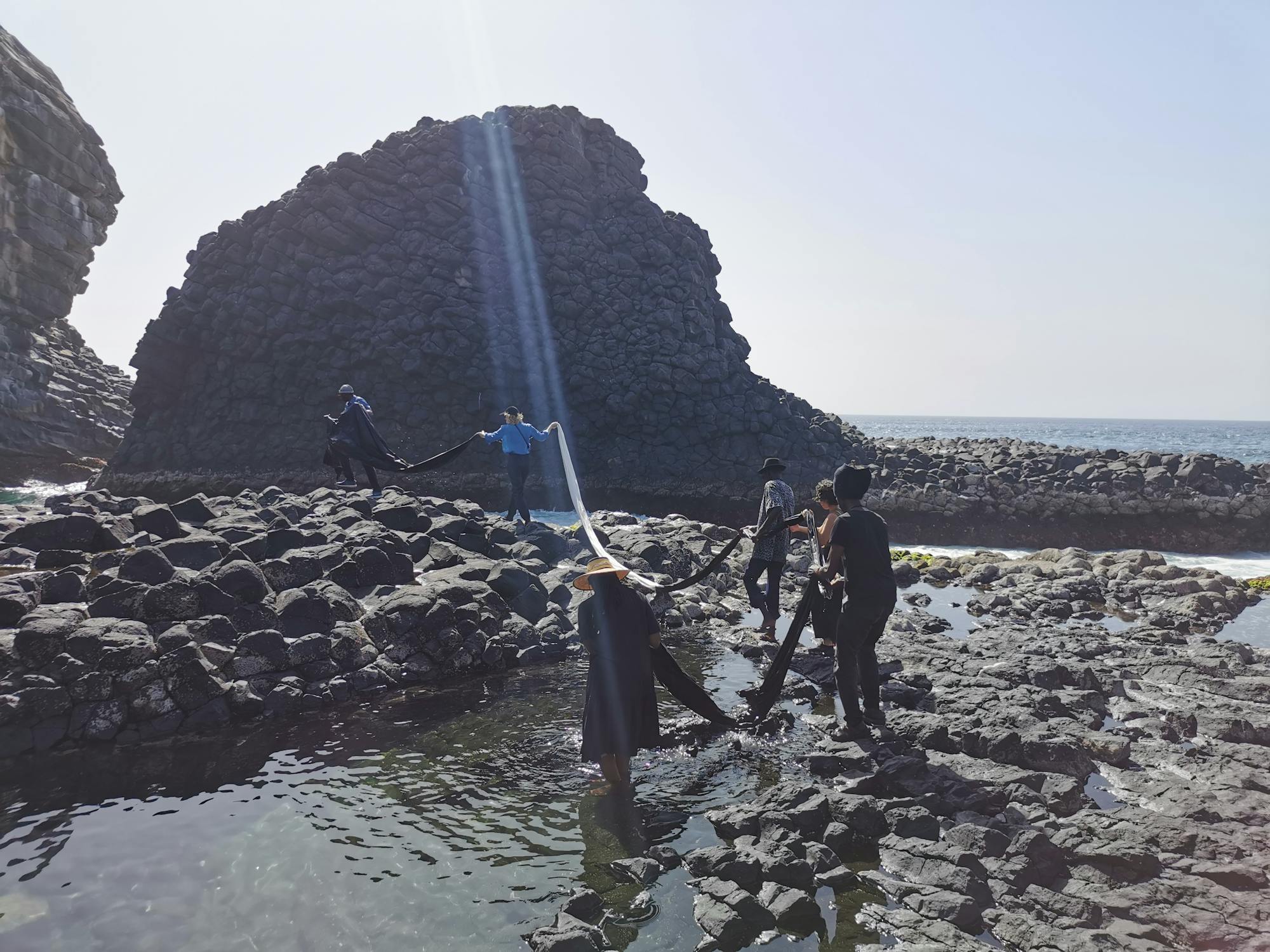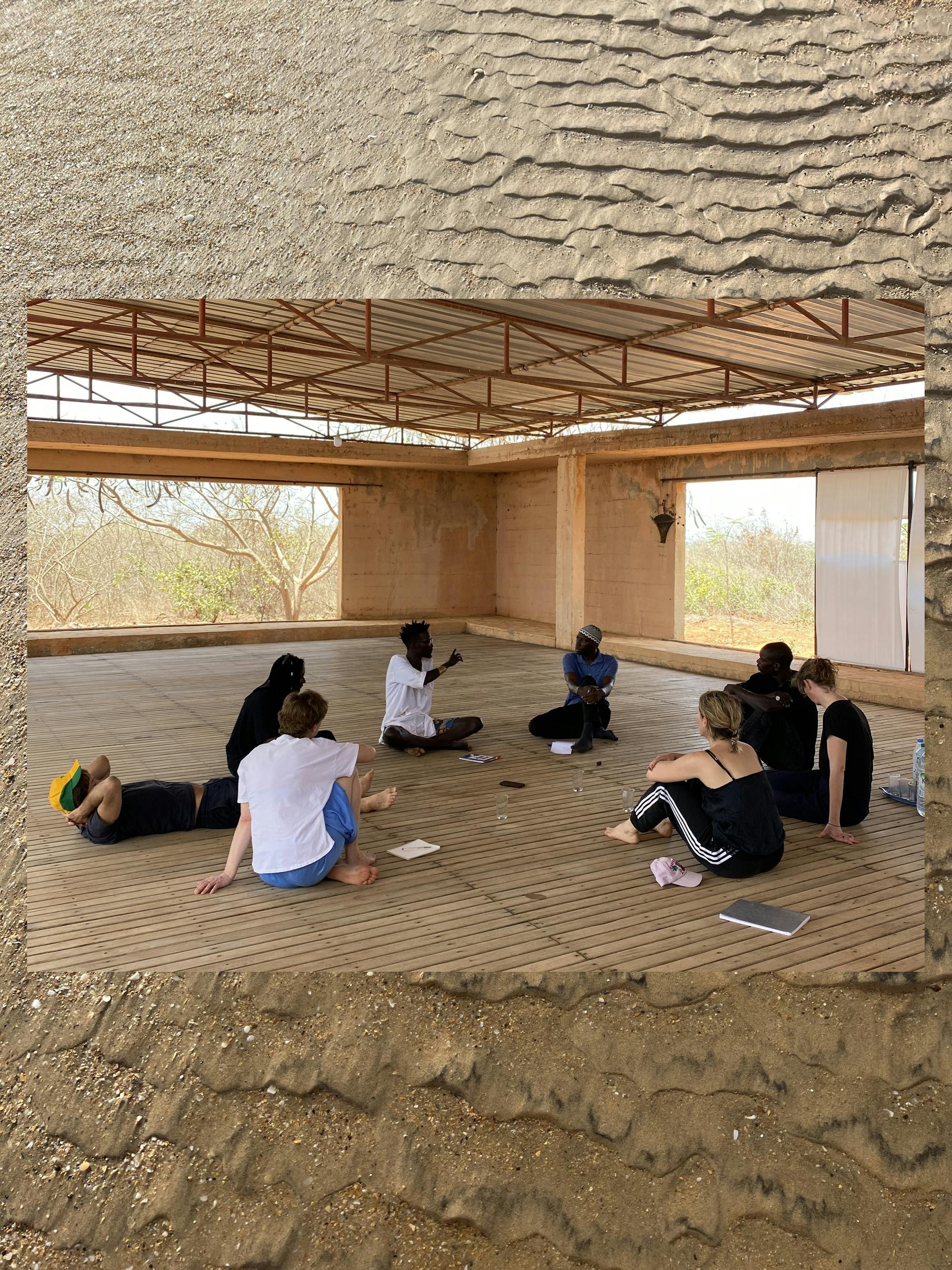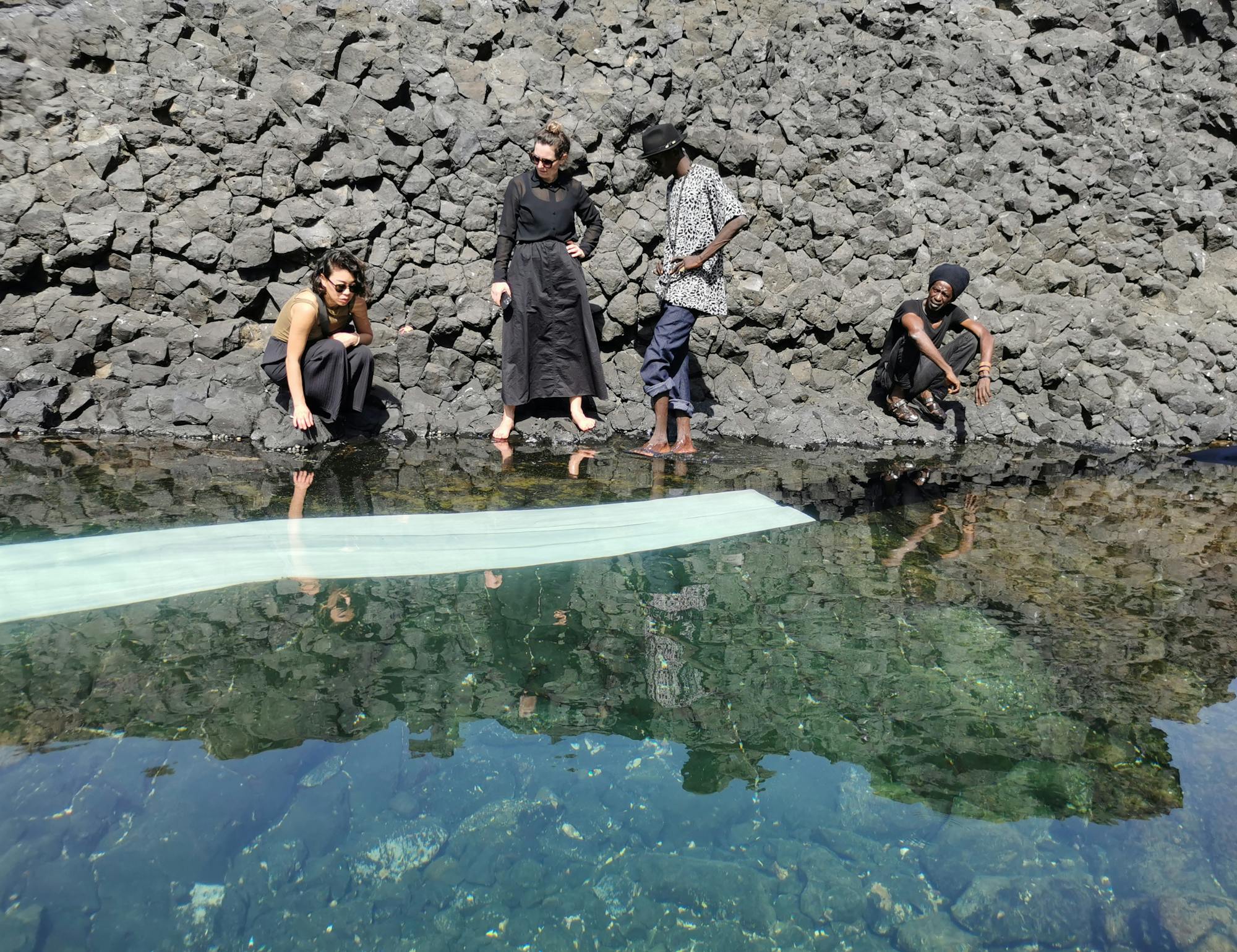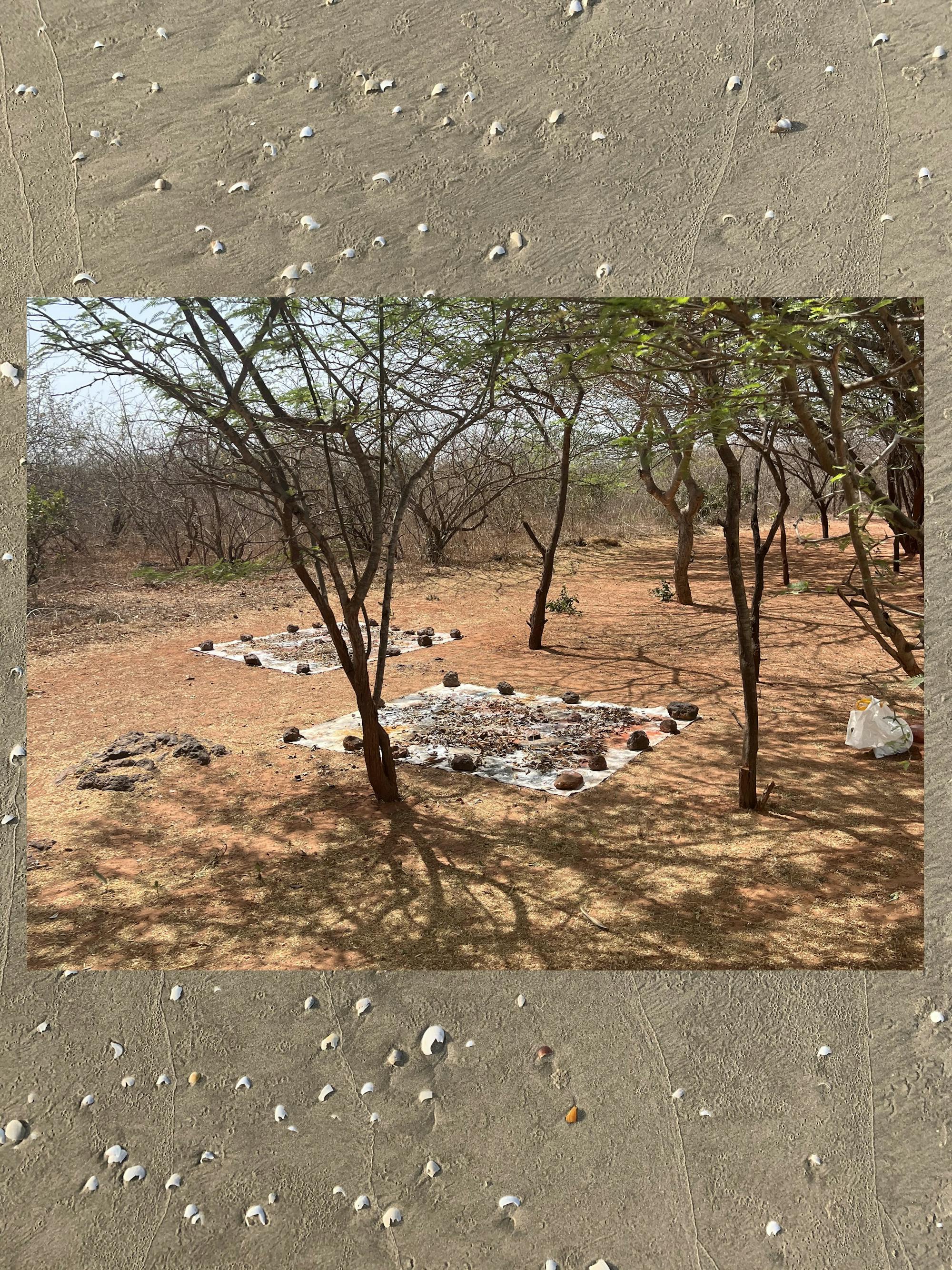Kemmler Foundation talks to Dry Ocean, a new collective artistic research and exhibition project between Dakar and Berlin.

Dry Ocean can be read as an interdisciplinary, transcontinental journey. Borne from an intensive exchange period between all participants, the project observes the notion of sharing individual cultural influences, hybrid experiences and knowledge traditions with one another through artistic practice. Art work emerging from this dialogue is less concerned with the creation of an individual stance, than with the translation of reciprocal inspiration and influences, i.e. ‘being touched’ and ‘allowing oneself to be touched’, into a symbiotic aesthetic form. Members of Dry Ocean include Katja Aufleger, Aliou "Badou" Diack, Ibaaku, Fabian Knecht, Jeewi Lee, Ana Lessing Menjibar, Selly Raby Kane, Agnes Stillger, Ibrahima Thiam and Nathalie Vairac.
Kemmler Foundation: What is Dry Ocean and how did the project come together?
Ana Lessing Menjibar: Dry Ocean is an independent, process orientated collective, run by ourselves, a group of artists and researchers in a non-hierarchical way. Through the diversity of practises and the specific way of working that each of us brings to Dry Ocean, the emphasis lies on our collective creation process, our exchange and our relationship, learning from each other and letting go of one owns working patterns.
Katja, Jeewi and I visited Badou in Dakar in March 2021. He organized a dinner on his roof with some artist friends, including Ibaaku and Selly. I remember the colours that late afternoon, before the sun went down, as warm, light, pastel shades in dusty air. This meeting between artists, feeling the wish to share more in the future, feels like the moment of initiation for Dry Ocean.
Ibrahima Thiam: For me, the project is a collective of artists from Senegal and Germany who explore plural ideas and narratives. The idea is created through artist encounters and exhibitions. I was invited by painter Aliou "Badou" Diack to join the collective in January 2022.

Jeewi Lee: The collective is an artist initiative that consists of creative members from different media and backgrounds. It is an experiment, a journey, focusing on the path and process, on exchange and self-organization. When "Badou" and I, whom I originally met in 2018 at Villa Romana in Florence, were stranded in Casablanca for four and a half months during the first Corona lockdown, there was an intense exchange and discussion about culture, traditions, religions and visions as artists. For me personally that became the seed moment when we had the desire to connect artists and researchers. And then, little by little, all the protagonists came together and formed a project family.
"With Dry Ocean, we are building a bridge."
What is the role of Dakar and Berlin as the two poles of the project?
Katja Aufleger: Both citys, Dakar and Berlin are vibrant capitals. They are very different, but they have one thing in common: both are places that bring together people from diverse backgrounds. Almost everyone in the group has chosen one of these two places as their adopted home. With Dry Ocean, we are building a bridge. Our goal is to come together as a group at least once in Dakar and once in Berlin to discuss our findings, research, and questions with the local communities.
Aliou „Badou“ Diack: You could say that Dakar and Berlin are just the cradle of the project... we plan to expand into other countries. Dakar is a hub for contemporary art in Africa. Starting this project there enables us to connect with other countries on the continent while Berlin, to us, is a cultural showcase for better access to the Western art scene.
How do you relate to land art as a movement in art history?
Ibrahima Thiam: The collective is a link as a movement in land art, allowing us to tell our imaginary story and reinvent ourselves.
Katja Aufleger: Land art is an interesting movement that has been the topic of some of our discussions. We've had related ideas, and some of them might be realized in the future. However, the way our discussions start is often quite vague. Like waves, we exchange thoughts, exploring topics such as the ocean, borders, and different ways of seeing life. How we will make these ideas visible comes after. Land art can be one approach, but it will probably never be the only one.
Aliou „Badou“ Diack: Dry Ocean can be seen as a new land. – you could say it's a land of origin for new possibilities. For us, it's a conceptual way of revisiting the notion of land art.The fact that its artists come from different universes and are always looking for new land to express themselves in, while at the same time participating in the ecological development of the latter. Some of the artists in this group are completely land art artists, others are not. Our relationship with land art is the fact that the Dry Ocean project is an opportunity for us to draw up a new socio-cultural and geographical cartography.

"We took the time to get caught up in the invisible world of Toubab Dialaw."
What did you experience at your first workshop in Toubab Dialaw in March this year?
Ibrahima Thiam: Our first gathering was a collective residency at the Mampuya center in Toubab Dialaw. A creative residency where ideas were exchanged to produce collective ideas.
Ibaaku: It was a good time to get to know each other better, and a time for experimentation too. We were able to discuss the different directions we wanted to explore. The result was „The Dance of Uncomfortness" or our performance/ritual on the beach at Popenguine. But we also took the time to get caught up in the invisible world of Toubab Dialaw. Trying to be present and listen to what this world is telling us. For my part, I also started creating the soundtracks we used for our work presented at the Ifan Museum in Dakar during the Partcours 2023 edition.
Agnes Stilger: The focus of the meeting was, on the one hand, the thematic orientation of our collaboration and, on the other, reflection on the forms of the collective itself. In discussions and through joint activities, from which concrete artistic results have already emerged, the following range of topics developed, which we want to work on in a deliberately long-term project. We will present the current status of these collaborations in the form of episodes.
When working on the first episode in Toubab Dialaw of Dry Ocean, we were interested in fluidity, transformation, rhythm, repetition and mutation, especially as methodological approaches on the meta-level of collaboration. Many drops or grains of sand form an organism and each cell contributes a whole world. The waves then also stand for the reciprocal influence that we have on each other in the exchange. The format of artistic production and presentation is also guided by reflections on the role of art, which include giving (back) to the world around us and questions about how we encounter a work of art.

"I actually welcome every moment of challenge in our work process."
What did you learn about the way you work as artists individually and as a group?
Ibrahima Thiam: An experience of working as a group with a plurality of stories. It was very interesting.
Ibaaku: As a group, we can tend to want to go in the same direction or think in the same way. I've learned that it's important to also take individuality into account and respect it, even when working as a group.
Jeewi Lee: The idea of working together in a multimedial group, one that comes from different backgrounds and moves in different realities, is very desirable. Likewise, one tends to romanticize a structure of a completely flat hierarchy, self-organized and thematically free framework to work in. In fact, however, this is not the easiest way and one rubs up against certain boundaries, which is so fruitful and the real thing. I'm learning so much through this experience and am so grateful for this enrichment to question myself and my own education and ambitions. I actually welcome every moment of challenge in our work process.
Kemmler Foundation supported Dry Ocean in pursuing artistic research in Toubab Dialaw, Senegal in April 2023 as well as an exhibition at Théodore Monod African Art Museum in Dakar, Senegal in December 2023.